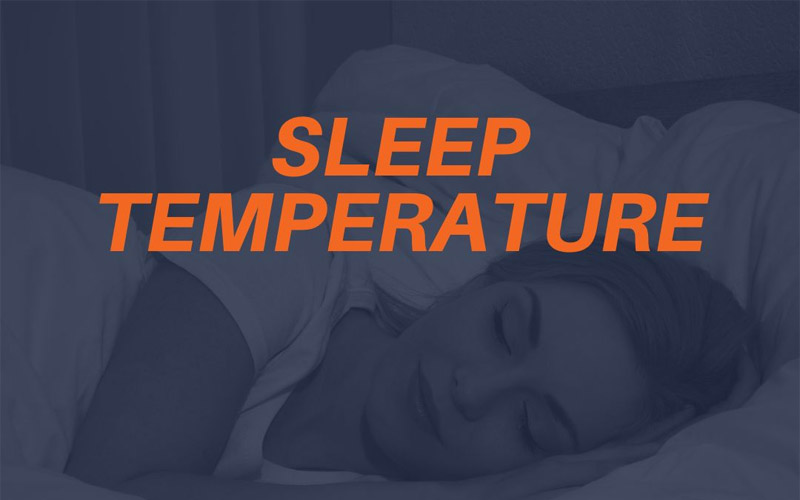Addressing sleep hygiene falls under the umbrella of a personal trainer’s coaching, making the environment for ideal sleep temperature an easy and obvious place to start. Core body temperature (CBT) is a key component and cue for sleep, alongside light exposure. Under ideal sleep conditions, light decreases until it is absent in the evening, the sleep hormone melatonin rises and CBT reduces by 1-2 degrees. Hands and feet are the exception–their temperature rises because heat is re-distributed there. For optimal sleep, we want a cool body and warm hands and feet.
In the morning, CBT elevates as the hormone cortisol rises and, of course, there are many other internal changes happening as well. These processes can be complicated or supported by the choices a person makes. Working with the body’s natural rhythms supports a vital and healthy existence and is free for everyone. No pills or interventions necessary. Sleep science speaks volumes and is broken down into easy-to-follow habits below.
Four Sleep Temperature Tips
When investigating one’s habits around sleep and temperature, here are four aspects to examine. Research guides us to what is optimal for many people, but there is room for variation, so guiding people to their own best practices is advised and what fitness professionals do best!
1. Environment
Sleep research suggests that a room temperature of 65 degrees is ideal (Sleep Foundation). This can vary between individuals, so a range of 60-67 degrees is suggested. Set the thermostat in the winter and air conditioner or fan in the summer to support a sleep-friendly temperature.
2. Clothing
Wearing comfortable clothing for sleep helps relax the body and can support or inhibit sleep temperature regulation the same way athletic clothing does for exercise. Whether it’s sleeping naked, clothed, with or without socks, preference factors in here. There is research suggesting that sleeping with socks is beneficial. Skin temperature is different than CBT, so keeping skin warm, dilates peripheral blood vessels and can help heat move out of the body (Sleep Doctor).
3. Water
Soaking in a tub of about 104 degrees Fahrenheit before bed elevates CBT, which facilitates a cooling-off process once the soak has ended. It also sends heat to the hands and feet for a swift exit.
4. Physical Activity
Exercise during the daytime enhances deep sleep and some research demonstrates that exercise in the evening benefits sleep, if it is not too intense. Exercise elevates CBT and heart rate, which might be too stimulating for some folks, so keeping a record of sleep quality and exercise habits is helpful for seeing patterns.
Sleep is Unique for Each Individual
These sleep temperature tips are based on research, but might not feel right to everyone. Have people choose one concept and focus on it for a week and then switch to another. When talking with clients about sleep habits, raising awareness is key. Consider using a sleep journal with them for a week or two. You will both learn a lot just from the practice of recording.
Keep in mind that sleep timing above all impacts temperature because it impacts melatonin release. Temperature has a powerful role in sleep health, but if a person isn’t on a sleep routine and allowing for enough volume of sleep, the body has to work harder to compensate for the loss and the irregularity.
Beverly Hosford, MA teaches anatomy and body awareness using a skeleton named Andy, balloons, play-doh, ribbons, guided visualizations, and corrective exercises. She is an instructor, author, and a business coach for fitness professionals. Learn how to help your clients sleep better with in Bev's NFPT Sleep Coach Program and dive deeper into anatomy in her NFPT Fundamentals of Anatomy Course.


